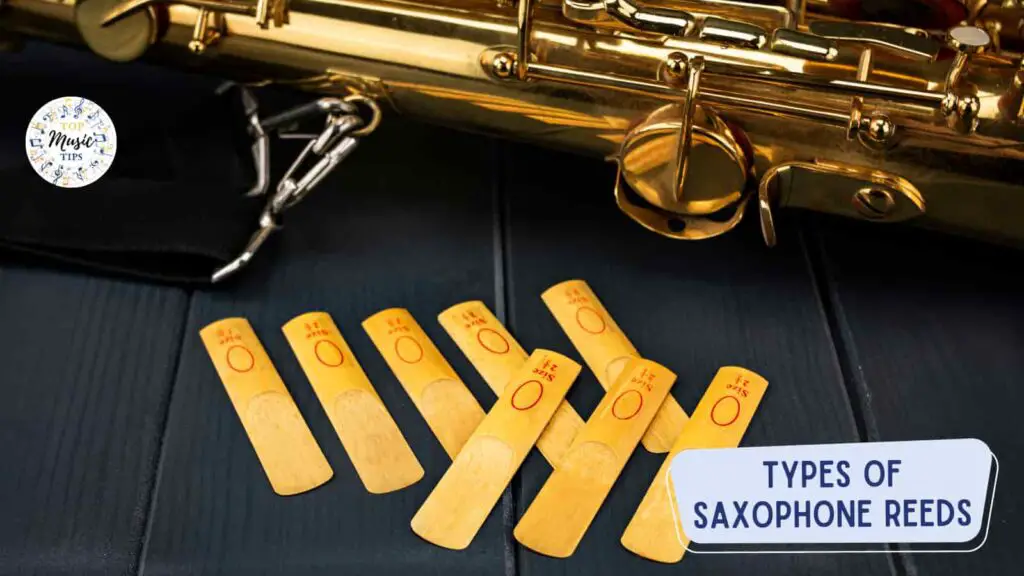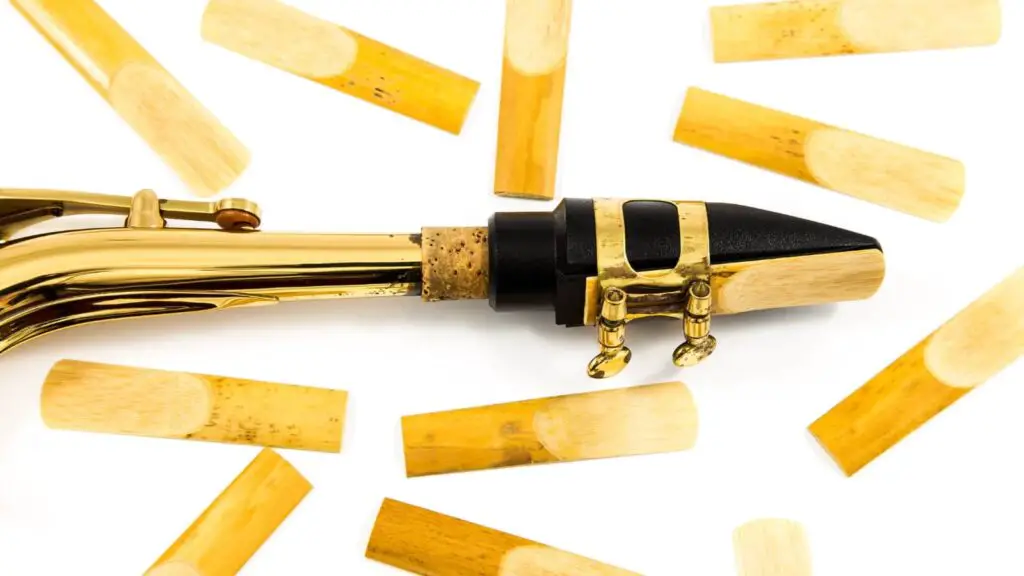Saxophone reeds are an essential component of producing sound on the instrument. They come in various types, each with its own unique characteristics and qualities. In this article, we will explore the different types of saxophone reeds, including traditional and synthetic options, as well as the distinction between hard and soft reeds.
By understanding the different types of saxophone reeds available, you can make an informed choice to enhance your playing experience.

Introduction to Saxophone Reeds
Saxophone reeds are thin, flat pieces of material that vibrate when air is blown through them. They attach to the mouthpiece of the saxophone and are responsible for producing sound. The type of reed used can significantly impact the tone, playability, and overall performance of the saxophone.
We want to help you choose the right reed for your playing style and preferences!
Different Types of Saxophone Reeds
There are two primary categories of saxophone reeds: traditional and synthetic. Additionally, saxophone reeds can be further classified based on whether they are single reeds or double reeds.
Traditional Saxophone Reeds
Traditional saxophone reeds are made from a material called cane. Cane reeds have been the standard choice for saxophonists for many years due to their natural sound and responsiveness. They are crafted from the Arundo donax plant, specifically the reed portion of the plant.
Cane Reeds
Cane reeds are available in various strengths, ranging from soft to hard.
The strength refers to the thickness and stiffness of the reed. Saxophonists select reed strengths based on their playing style, embouchure, and desired sound. Beginners often start with softer reeds, while more experienced players tend to prefer stronger reeds.
Strengths of Cane Reeds
The strength of a cane reed affects both the sound and the ease of playing. Softer reeds produce a mellow and warm tone, making them suitable for beginners or those seeking a more relaxed sound.
On the other hand, harder reeds produce a brighter and more focused tone, offering better projection and control for advanced players.
Brands and Models of Cane Reeds
There are several well-known brands that produce cane reeds, including Vandoren, Rico, D’Addario, and La Voz.
Each brand offers different models within their product range to cater to various playing styles and preferences. Some popular models include Vandoren Traditional, Rico Royal, D’Addario Reserve, and La Voz Medium.
Synthetic Saxophone Reeds
Synthetic saxophone reeds are an alternative to traditional cane reeds. These reeds are made from synthetic materials such as plastic or composite materials. Synthetic reeds aim to provide consistency, durability, and resistance to changes in humidity and temperature.
Materials Used in Synthetic Reeds
The materials used in synthetic reeds can vary among manufacturers. Common materials include high-quality plastics, composite materials, and carbon fiber. These materials are carefully engineered to replicate the tonal qualities and responsiveness of cane reeds.
Advantages of Synthetic Reeds
One of the main advantages of synthetic reeds is their durability. They tend to last longer than cane reeds, making them a cost-effective option in the long run. Synthetic reeds are also less affected by changes in temperature and humidity, resulting in greater stability in sound production.
Brands and Models of Synthetic Reeds
Several reputable brands produce synthetic saxophone reeds. Some popular options include Legere, Fibracell, and Forestone. Each brand offers different models and strengths to accommodate various playing styles and saxophone setups.
Note: Synthetic reeds offer consistency in their performance. Unlike cane reeds, which can vary in quality from reed to reed, synthetic reeds are manufactured with precise specifications, ensuring a reliable and uniform playing experience.
Choosing the Right Saxophone Reed
Selecting the right saxophone reed is crucial to achieving the desired sound and playability. Here are some considerations to keep in mind when choosing the right saxophone reed:
Considerations for Beginners
For beginners, it is recommended to start with softer reeds. Softer reeds are more forgiving and easier to produce sound with, allowing beginners to focus on developing their embouchure and technique. As skills progress, players can gradually move on to stronger reeds for more control and projection.
Considerations for Advanced Players
Advanced players often have a specific sound in mind and may prefer reeds that cater to their playing style. Experimentation with different brands, models, and strengths of reeds is essential to find the perfect match. Advanced players may also consider factors such as response, tonal color, and articulation when choosing reeds.

Experimenting with Different Reeds
Every saxophonist’s preference is unique, and experimenting with different reeds can lead to exciting discoveries. Trying out various brands, models, and strengths of reeds can help players find the combination that suits their individual style and desired sound. It is important to give each reed a fair chance by playing it for an extended period before making a judgment.
Maintaining and Caring for Saxophone Reeds
Proper care and maintenance can extend the lifespan of saxophone reeds and ensure optimal performance. Here are some tips for maintaining and caring for your reeds:
Reed Storage Tips
- Always store reeds in a reed case or holder specifically designed to maintain their shape and prevent warping.
- Use a reed case with a humidity control system or consider using reed cases with reed revitalization packs to maintain the reeds’ moisture content.
- Avoid leaving reeds on the mouthpiece for extended periods, as this can cause warping and damage.
- After playing, gently clean the reed with a soft cloth or reed rush to remove moisture and debris.
- Rotate reeds regularly to allow them to dry and recover between uses.
- Avoid excessive moisture on the reed by using a mouthpiece patch or applying minimal saliva while playing.
- If a reed becomes damaged or starts to lose its responsiveness, it may be time to replace it.
Saxophone Reed Placement
Reed placement on the saxophone significantly impacts sound and playing ability. Proper alignment ensures even tone production, accurate intonation, and a wide dynamic range.
Incorrect placement leads to uneven tone, difficulty in sound production, intonation issues, limited dynamics, and decreased responsiveness. For a more comprehensive understanding of the topic, read our in-depth article on the importance of proper reed placement and its impact on saxophone performance.
In conclusion, saxophone reeds are essential components that greatly impact the sound and playability of the instrument. Understanding the different types of saxophone reeds, such as traditional cane reeds and synthetic reeds, as well as the distinction between single reeds and double reeds, allows saxophonists to make informed choices that align with their preferences and playing style.
By selecting the right saxophone reed and taking proper care of it, you can enhance your playing experience and achieve the desired tone and responsiveness from your saxophone.
We hope this article has been helpful and informative for you in your musical journey. Please let us know if there is anything that we could add or change to make this article a better resource for our readers.
Please e-mail us at: [email protected] to let us know how we are doing!
Disclaimer: This post may contain affiliate links. We only recommend high-quality products that are used and recommended by real musicians. If you use these links to buy something we earn a small commission.
